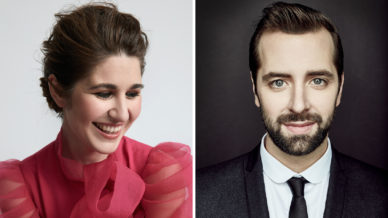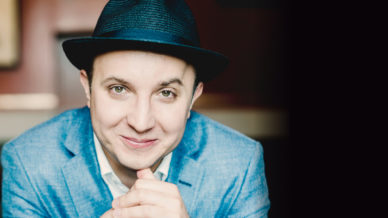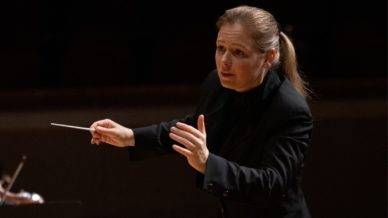

Luisi Conducts Beethoven 9
May 12 – 15, 2022
FABIO LUISI conducts
ANGEL BLUE soprano
TAYLOR RAVEN mezzo-soprano
ISSACHAH SAVAGE tenor
SOLOMAN HOWARD bass-baritone
DALLAS SYMPHONY CHORUS – JOSHUA HABERMANN director
BRUCE ADOLPHE Diesen Kuss der ganzen Welt! (This Kiss to the Whole World!) | DALLAS PREMIERE
BEETHOVEN Symphony No. 9, “Choral”
Bruce Adolphe is a composer, educator, performer and author whose “original compositions convey a compelling voice, high craft, authenticity, communicative immediacy and substance” (Gramophone).
Arguably, one of the most quoted pieces of music ever. Beethoven’s final symphony was revolutionary in its use of a full chorus and vocal soloists in the finale. At the point of its conception, Beethoven was completely deaf and experiencing major frustration, loneliness and depression, all expressed in the way the first movement moves from silence to sound.
The riveting scherzo has astounding fugal passages that some feel reflects Beethoven’s daily struggle to communicate with the outside world. The finale uses Schiller’s An die Freude (Ode to Joy) and expresses the humanistic idea that all people of this earth should love one another.
As a whole, the work is an epic summation of all of Beethoven’s genius!
Make a gift, and double the impact of your support! Thanks to a generous gift from our friends at the David M. Crowley Foundation, all new and increased gifts made by May 31, 2022 will be matched dollar-for-dollar, up to $75,000. Give Now

For information on our COVID-19 safety protocols, please visit here.
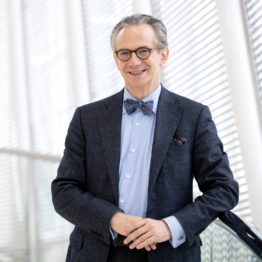




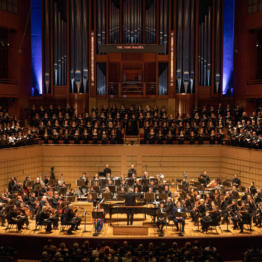
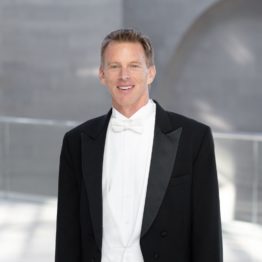
Program Notes
by René Spencer Saller
Even in our hyperpolarized times, Ludwig van Beethoven’s Symphony No. 9 feels like a unifying force across the globe, a cultural common good. The fourth-movement choral setting of a Friedrich Schiller poem—the ultra-hummable “Ode to Joy” melody—has been recycled countless times over the years. It’s the official anthem of the European Union. It pops up in movie soundtracks and television commercials, and huge crowds belt it out before sporting events. Without Beethoven’s immortal earworm, revelers from Japan to Germany would hardly know how to ring in the New Year.
But the price of ubiquity is steep. Monuments get buried under layers of interpretive grime. Something that means so many things—international diplomacy, Enlightenment values, pasteurized cheese product—verges on meaninglessness, becoming an empty signifier, a dead metaphor.
For Beethoven, who drafted, revised and perfected his final symphony over more than 30 years, the meaning was urgent, immediate, vital. He wanted his music to enact a journey of transformation, exploring themes of struggle and salvation, community and compassion. Although he wasn’t religious in the conventional sense, he found spiritual sustenance in his art. In a letter from 1821, a few years before he completed the Ninth Symphony, he explained to his pupil and patron, the Archbishop Rudolph, what composing music meant to him: “There is nothing higher than to approach the Godhead more nearly than other mortals and by means of that contact to spread the rays of the Godhead through the human race.”
Almost 200 years later, Bruce Adolphe refracts some of those Beethovenian Godhead rays in his orchestral response to the “Choral” Symphony. A co-commission of the Dallas Symphony Orchestra and Bravo! Vail, Diesen Kuss der ganzen Welt! revisits Beethoven’s sound world while underscoring his eternal relevance. Maestro Luisi led the DSO in the world premiere at the Bravo! Vail festival last July.
A graduate of The Juilliard School and a native New Yorker, Adolphe has been creating and directing educational programs at the Chamber Music Society of Lincoln Center for the past 30 years. He has taught at Yale University, New York University’s Tisch School of the Arts, and Juilliard’s pre- college division, and he has served as composer in residence at Bravo! Vail, La Jolla SummerFest, Music from Angel Fire, and other major festivals. His compositions have been performed by the Orpheus Chamber Orchestra, Los Angeles Chamber Orchestra and St. Paul Chamber Orchestra, among other leading ensembles. Adolphe has written three books on the topic of musical understanding, and he has lectured widely on multiple platforms.
Diesen Kuss der ganzen Welt! is the latest in his recent series of compositions inspired by specific Beethoven works. Adolphe completed his Fantasia on Beethoven’s Spring Sonata in 2020, and debuted Coiled, which is based on the first movement of the Op. 95 string quartet, in 2019.
The Composer Speaks
“Diesen Kuss der ganzen Welt!” (This Kiss to the Whole World) is a famous line from the “Ode to Joy” by Friedrich Schiller, the text set by Beethoven in his Ninth Symphony. As this work was commissioned specifically to be on the same program with the Ninth, I chose this quote to be both the title and the message: that all humankind is together in this world, we are related, and we should celebrate our humanity with love and joy. In addition to the title, there are several musical connections to Beethoven’s Ninth in this work: the opening tremolo in the violins; the use of recitative-like phrases in the cellos; the shapes of some melodic fragments; the presence of timpani solos.” —Bruce Adolphe
FIRST PERFORMANCE: May 7, 1824 – Vienna
LAST PERFORMANCE BY THE DSO: May 26, 2018;
Jaap van Zweden conducting
“Always keep the whole in mind,” Beethoven liked to say, a maxim that the Ninth exemplifies. Everything leads inexorably to the finale, the apotheosis of the “An die Freude” (Ode to Joy) motif. He was a teenager when he first declared his intention to set Friedrich Schiller’s “An die Freude” to music, in the heady days of the Aufklärung (Enlightenment). In the decades that elapsed before the score was complete, he saw the ideals of the French Revolution trampled by repressive regimes. Resurrecting Schiller’s humanist anthem was a subversive act in 1824, when Austrians could be arrested for saying the word “freedom” or gathering in groups of more than a few unrelated people. Because Beethoven wanted his choral finale to seem like the inevitable outcome of the preceding three movements, he needed to keep his foundational motif in mind from the outset. He wrote the first eight measures of the Freude tune fairly quickly, but he went through dozens of drafts before he figured out a way to finish it. Simplicity is hard.
A Closer Listen
Marked Allegro ma non troppo, un poco maestoso (Cheerful but not excessively and slightly majestic), the first movement begins with a stark open fifth and dissonant tremolos. Out of this void emerges the first faint sign of the Freude theme, inverted here as three descending notes. Just as the universe arose from nothingness, the theme seems to arise, in fits and starts, from a yawning abyss. Set in 2/4 meter, the opening Allegro develops in complex and often unexpected ways. Two keys are dramatically juxtaposed: D minor (the home key, or tonic) and B-flat Major. Throughout we get brief flashes of D Major, foreshadowing the euphoric finale.
The second movement, a scherzo with fugal and sonata-form elements, is also in the home key, at least nominally. Marked “molto vivace,” it combines an anarchic opening (check out that hell-raising timpani!) and a pastoral central interlude, where the key changes to D Major and triple meter shifts to duple. The first notes of the Freude theme return, but they’re tricked out in a different rhythm: another subliminal preview of future pleasures.
Structurally, the ravishing slow movement is a loose adaptation of a theme-and variations form. Beethoven marked it Adagio molto e cantabile, or “very slow and singing,” and the indication reminds us why the Chorus has been standing there patiently all this time, waiting to let loose with the part we’ll be humming as we leave the Meyerson, and possibly for weeks afterward. But Beethoven was the master of deferred gratification. Never mind those brief rebukes from the brass: in this paradise of hushed strings and gentle winds, melodies linger, suspended in bliss.
The choice of key—B-flat Major—signals a break from the tonal tumult, the minor-key chaos of the preceding movements. “Melody,” Beethoven explained in a letter, “must always be given priority above all else.” His sketchbooks suggest that he worked intensively on the Adagio in 1823, hashing out the first theme in several stages; his secondary theme, in 3/4 time, came to him more or less intact.
Even when we know what’s coming, the first moments of the finale are a visceral jolt. Richard Wagner called it a “terror fanfare,” Beethoven biographer Jan Swafford calls it a “brassy burst of fury,” and no matter what you call it, you will flinch when it smacks you at full volume. It’s supposed to hurt a little: a bracing slap to wake you up for the Big Reveal, when the theme bursts loose in a torrent of delirious variations. Never has the transition from minor to major felt more satisfying, more essential. For listeners the ecstasy only mounts, but for singers the finale is downright scary, a brutal tessitura that demands impossibly high notes to be held for an impossibly long time.
As for the rest of it, let’s just skip the usual blather about universal love and the brotherhood of man, those high- minded phrases that we talk about but fail to understand, much less demonstrate. Some killjoys argue that the Ninth is overprogrammed and we’re numb to it now, but if knowing every note by heart were a dealbreaker, Beatles fans wouldn’t exist. It’s not the music but the meanings we’re sick of, all that dreary blah-blah-blah.
“All art constantly aspires towards the condition of music,” Walter Pater famously observed, and the maxim resonates because it seems true. So why do we expect music to do even more? We want it to tell us a story about ourselves, but music tells its own stories, in its own language. If it’s not the Godhead, it’s close enough.
